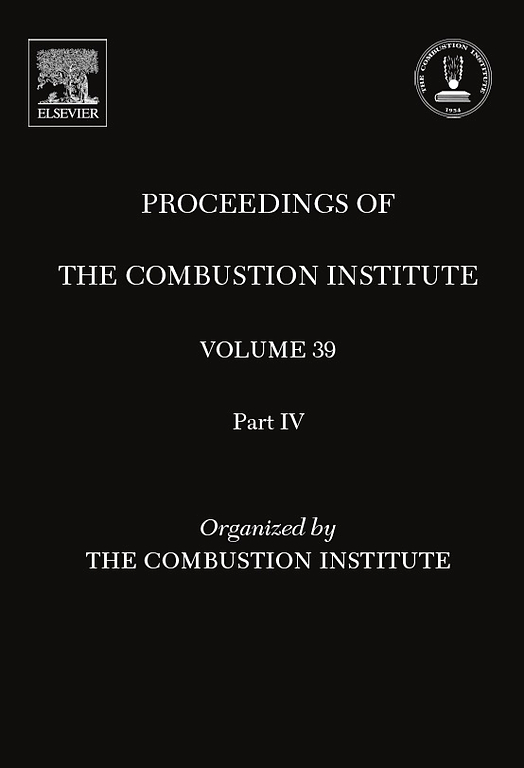热交叉流中高度提升的预混合喷射火焰的火焰稳定性
IF 5.3
2区 工程技术
Q2 ENERGY & FUELS
引用次数: 0
摘要
我们报告了对热交叉流中高扬程预混合甲烷-空气喷射火焰的大规模直接数值模拟(DNS),该火焰与轴向分段燃气轮机燃烧系统相关。射流雷诺数为 17938,横流雷诺数为 28822。除压力外,热化学参数与实际的轴向分段燃烧器非常吻合。将等效比为 0.7 的预混合甲烷-空气射流喷射到由等效比为 0.5 和大气压力下的甲烷-空气混合物燃烧产物组成的虚化横流中。对 DNS 进行分析,以了解火焰的稳定机制。DNS 显示了一个准静态锚定在背风面的抬升火焰。时间尺度和羟基预算分析表明,自燃是主要的稳定机制,而背风面的锚定则可参照停留时间和标量耗散率来解释。研究还表明,反向旋转涡对和背风点火核之间的相互作用导致了喷流核心的预混合火焰。本文章由计算机程序翻译,如有差异,请以英文原文为准。
Flame stabilisation in a highly-lifted premixed jet flame in a hot cross flow
We report a large-scale direct numerical simulation (DNS) of a highly-lifted premixed methane–air jet flame in a hot cross flow, relevant to axially staged gas-turbine combustion systems. The jet Reynolds number is 17,938 and the cross flow Reynolds number is 28,822. Apart from pressure, the thermochemical parameters closely match practical axially staged combustors. A premixed methane–air jet with an equivalence ratio of 0.7 is injected into a vitiated cross flow comprising combustion products from a methane–air mixture at an equivalence ratio of 0.5 and atmospheric pressure. The DNS is analysed to understand the stabilisation mechanism of the flame. The DNS reveals a lifted flame quasi-statically anchored on the leeward side. Time scale and OH budget analyses demonstrate that autoignition is the dominant stabilisation mechanism, and the leeward side anchoring is explained with reference to residence time and scalar dissipation rate. The study also shows that the interaction between the counter-rotating vortex pair and leeward ignition kernels results in a premixed flame in the jet core.
求助全文
通过发布文献求助,成功后即可免费获取论文全文。
去求助
来源期刊

Proceedings of the Combustion Institute
工程技术-工程:化工
CiteScore
7.00
自引率
0.00%
发文量
420
审稿时长
3.0 months
期刊介绍:
The Proceedings of the Combustion Institute contains forefront contributions in fundamentals and applications of combustion science. For more than 50 years, the Combustion Institute has served as the peak international society for dissemination of scientific and technical research in the combustion field. In addition to author submissions, the Proceedings of the Combustion Institute includes the Institute''s prestigious invited strategic and topical reviews that represent indispensable resources for emergent research in the field. All papers are subjected to rigorous peer review.
Research papers and invited topical reviews; Reaction Kinetics; Soot, PAH, and other large molecules; Diagnostics; Laminar Flames; Turbulent Flames; Heterogeneous Combustion; Spray and Droplet Combustion; Detonations, Explosions & Supersonic Combustion; Fire Research; Stationary Combustion Systems; IC Engine and Gas Turbine Combustion; New Technology Concepts
The electronic version of Proceedings of the Combustion Institute contains supplemental material such as reaction mechanisms, illustrating movies, and other data.
 求助内容:
求助内容: 应助结果提醒方式:
应助结果提醒方式:


